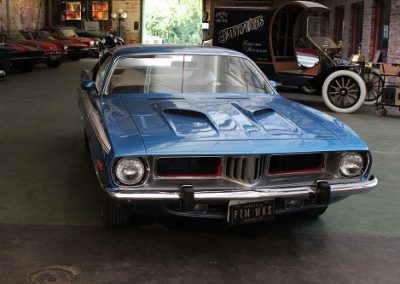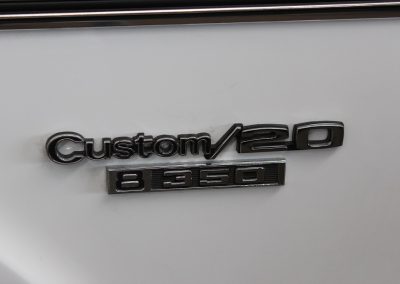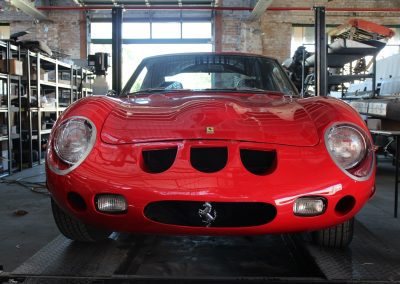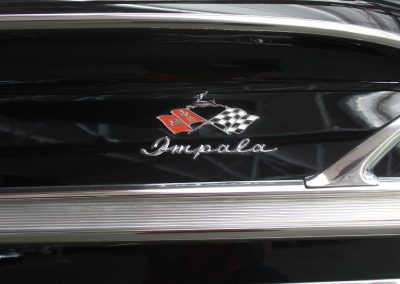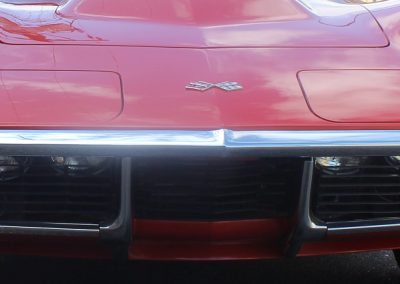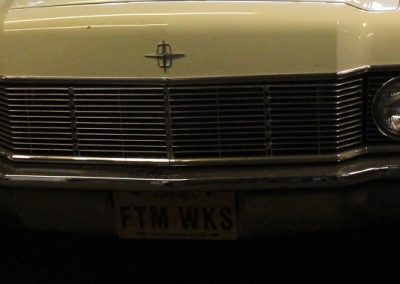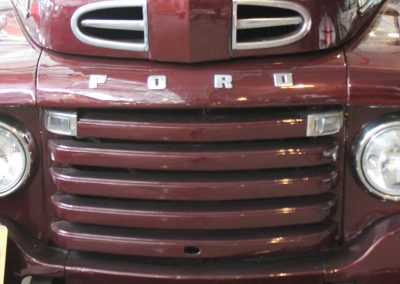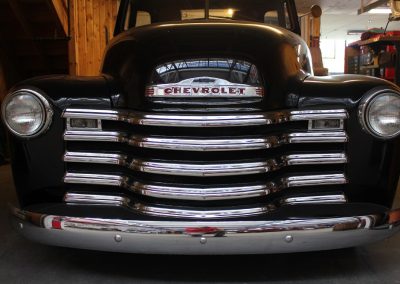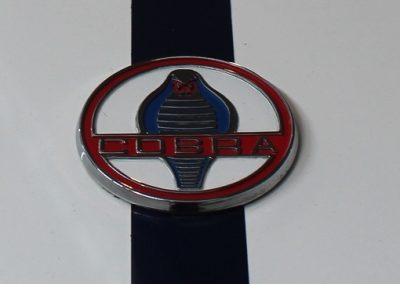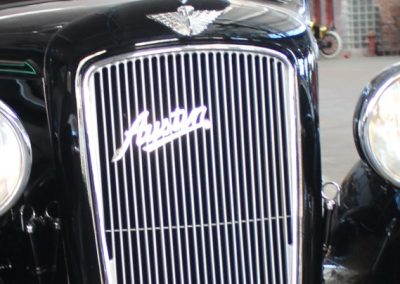1967 Amphicar Model 770

As seen on Season Six of FantomWorks
Owner Insight:
Explore the Project Galleries
Arrival
Dissassembly
Strip & Metal Fab
Mechanical
Body & Paint
Trim & Detail
Finish
The Amphicar Model 770 is an amphibious automobile, launched at the 1961 New York Auto Show, manufactured in West Germany and marketed in the United States from 1961-1967, with production having ended in 1965.
Designed by Hanns Trippel, the amphibious vehicle was manufactured by the Quandt Group at Lübeck and at Berlin-Borsigwalde, with a total of 3,878 manufactured in a single generation.
A descendant of the Volkswagen Schwimmwagen, the Amphicar offered only modest performance compared to most contemporary boats or cars, featured navigation lights and flag as mandated by Coast Guard — and after operation in water, required greasing at 13 points, one of which required removal of the rear seat.
The Amphicar name is a portmanteau of “amphibious” and “car”.
Front undersurface is slightly pointed and sharply cut away below. The wheels are set low, so that the vehicle stands well above ground level when on dry land. Front and rear bumpers are placed low on the body panels (but fairly high in relation to dry ground). The one-piece windshield is curved. The foldable top causes the body style to be classified as cabriolet. Its water propulsion is provided by twin propellers mounted under the rear bumper. The Amphicar is made of mild steel.
The Amphicar’s engine was mounted at the rear of the craft, driving the rear wheels through a 4-speed manual transmission. For use in the water, the same engine drove a pair of reversible propellers at the rear, with a second gear lever engaging forward or reverse drive. Once in the water, the main gear lever would normally be left in neutral. By engaging first gear as well as drive to the propellers when approaching a boat ramp, the Amphicar could drive itself out of the water.
The powerplant was the 1147 cc (69 in³) engine from the British Triumph Herald 1200. Many engines were tried in prototypes but the Triumph engine was “state of the art” in 1961 and had the necessary combination of performance, weight, cool running, and reliability. Updated versions of this engine remained in production in the Triumph Spitfire until 1980. The Amphicar engine had a power output of 43 hp (32 kW) at 4750 rpm, slightly more than the Triumph Herald due to a shorter exhaust. Designated the “Model 770”, the Amphicar could achieve speeds of 7 knots in the water and 70 mph (110 km/h) on land. Later versions of the engine displaced 1296 cc and 1493 cc and produced up to 75 bhp (56 kW). Some Amphicar owners have fitted these engines to improve performance.
One owner was quoted “It’s not a good car and it’s not a good boat, but it does just fine” largely because of modest performance in and out of water. Another added, “We like to think of it as the fastest car on the water and fastest boat on the road.”
Production started in 1961. From 1963-65 cars were assembled from parts inventory built up in anticipation of sales of 20,000 per year. Production ended in 1965. Cars were titled in the year they actually sold rather than when they were produced, e.g. an Amphicar assembled in 1963 could be titled a 1968 if that was when it was first sold.
Most Amphicars were sold in the United States. Cars were sold in the United Kingdom from 1964. Total production was 3,878 vehicles before the company folded. 99 right-hand drives were converted from left-hand drives. Some were used in the Berlin police department and others were fitted for rescue operations.


































